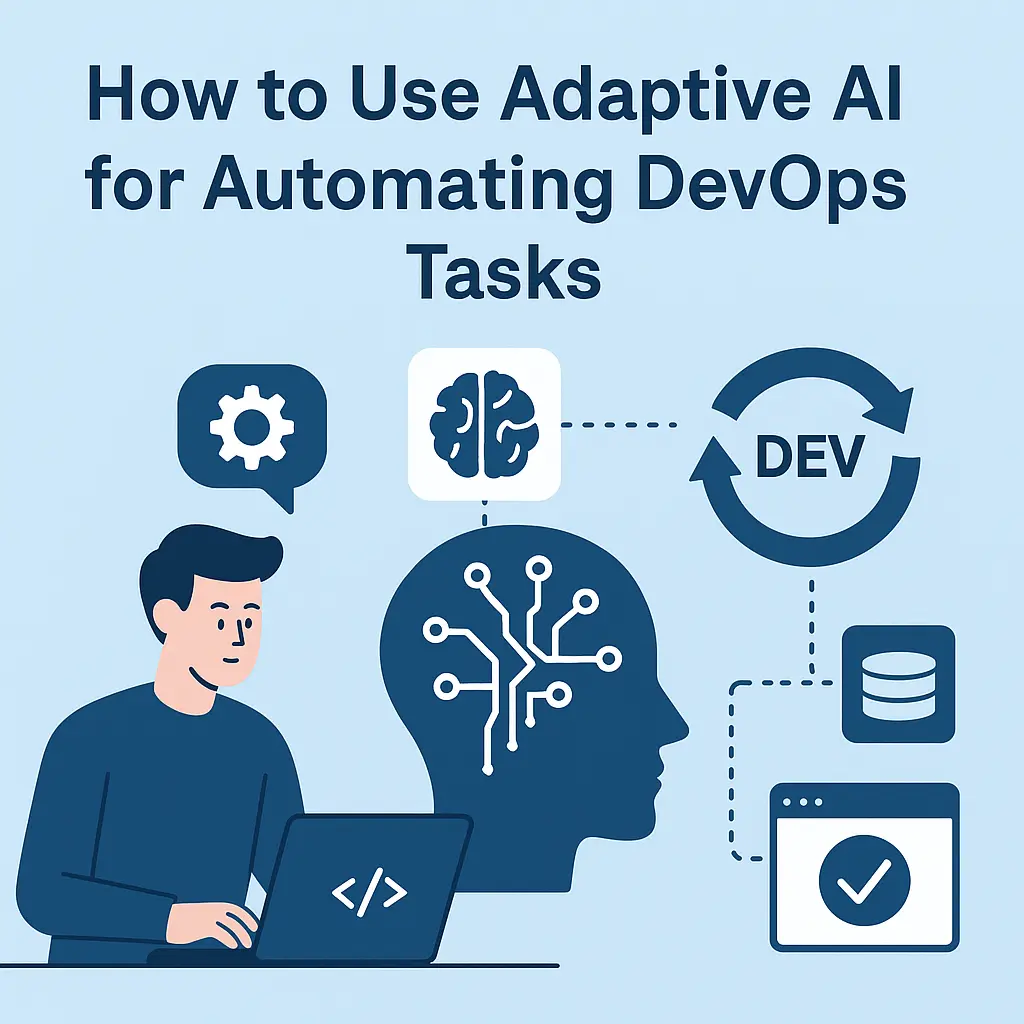What are LAM (Large Action Models)?
Large Action Model (LAM) is a game-changer in artificial intelligence, revolutionizing how machines understand and execute human intentions. While Large Language Models (LLMs) and Generative AI have made significant strides, LAMs represent a quantum leap, transcending mere text generation to embody autonomous agents capable of proactive decision-making.
Championing this paradigm shift is the Rabbit Research Team, trailblazers behind the groundbreaking Rabbit r1. This pocket-sized marvel ushers in a new epoch of human-computer synergy, promising seamless interactions and unparalleled efficiency. With LAMs spearheading innovative digital transformation solutions, the horizon brims with promise and possibility, poised to redefine the very essence of AI.
In the ever-evolving landscape of Artificial Intelligence (AI), a groundbreaking innovation has emerged – Large Action Models, or LAMs. Unlike their predecessors, LAMs transcend mere responsiveness, wielding the power to autonomously execute tasks through sophisticated software entities known as agents.

Image Credit: Medium
Picture this: a digital assistant not just responding to your inquiries but actively contributing to achieving your goals. This is the essence of Large Action Model, which seamlessly integrate the linguistic prowess of Large Language Models (LLMs) with the ability to comprehend and execute complex actions independently.
How do LAMs achieve such remarkable feats?
Through a combination of advanced neuro-symbolic programming and extensive learning from massive datasets, these models possess the capability to understand human intentions and translate them into actionable tasks in real-time. Traditionally, AI models like LLMs could comprehend prompts and provide textual or visual outputs, albeit with limitations in executing actions. However, LAMs bridge this gap, empowering users with the ability to seamlessly interact with various interfaces, akin to human interaction with smartphone applications.
The recent debut of Rabbit R1, an AI device powered by LAM technology, has further catapulted Large Action Models into the spotlight. With its intuitive voice-controlled interface and seamless integration into daily tasks, Rabbit R1 heralds a new era of human-computer interaction, where technology becomes an enabler rather than a barrier.
In essence, LAMs represent a paradigm shift in AI, offering not just responsiveness but proactivity, not just comprehension but execution. As we navigate the complexities of the digital age, the advent of Large Action Models stands as a testament to the relentless pursuit of innovation, ushering in a future where human potential is augmented by the power of AI.
Architecture Of LAM
The architecture of Large Action Models (LAMs) is a marvel of modern AI engineering, meticulously designed to replicate the intricate interplay between applications and human actions. Unlike traditional textual representations, LAMs possess the unique ability to simulate diverse applications and the corresponding human interactions without the need for temporary demonstrations.
At its core, LAMs fuse neuro-symbolic programming with cutting-edge technologies. But what does this mean in practical terms? Imagine a digital entity that not only understands your intent but also executes actions within applications seamlessly. Their architecture orchestrates understanding and execution, promising a future where computers don’t just comprehend words—they make things happen. That’s the essence of LAMs.
-
Direct Modeling of Human Actions
Unlike traditional models that rely on transient representations, LAMs directly model the structure of applications and the actions performed on them. Think of it as a digital choreographer—observing, learning, and replicating human interactions without missing a beat.
-
Neuro-Symbolic Magic
LAMs leverage a hybrid neuro-symbolic model. This fusion of neural networks and symbolic algorithms empowers them with explainability, fast inference, and simplicity. It’s like having an orchestra where neural notes harmonize with symbolic melodies.
-
Competitive Edge in Web Navigation
LAMs shine in web navigation tasks. They outperform purely neural approaches, enhancing accuracy and reducing latency. Whether it’s booking flights, automating workflows, or assisting users, LAMs are the virtuosos of action.
The Technical Core of Large Action Models
In the realm of Artificial Intelligence, Large Action Models (LAMs) boast a sophisticated technical architecture designed to tackle complex tasks with finesse. Here’s a breakdown of the key components that power these remarkable systems:
-
Action Representation
LAMs utilize a blend of symbolic and procedural representations to formalize actions, offering a versatile framework capable of capturing a diverse array of tasks with precision.
-
Action Hierarchy
Embracing a hierarchical structure, LAMs organize actions into a tree-like arrangement, with higher-level actions orchestrating lower-level counterparts. This hierarchical model facilitates seamless planning and execution of intricate actions.
-
Planning Engine
At the heart of Large Action Model lies a robust planning engine, meticulously crafting action sequences to fulfill predefined objectives. By analyzing the current state and available actions, the planning engine devises strategies optimized for success.
-
Execution Module
LAMs employ an execution module to enact the generated action sequences. This module coordinates the execution of sub-actions, ensuring a synchronized and orderly performance of tasks.
-
Learning and Adaptation
Continual evolution is at the core of LAMs, as they harness the power of learning and adaptation. Through ongoing refinement of action representations and enhancement of planning capabilities, LAMs adapt their behavior based on feedback and experience, continually refining their performance.
Understanding How LAMs Work
In the intricate world of Artificial Intelligence, Large Action Models (LAMs) stand out for their sophisticated approach to task execution. By dissecting complex actions into manageable steps, LAMs employ a hierarchical action representation system, ensuring precision and efficiency in planning and implementation. Combining neural networks with logical reasoning, LAMs observe and learn from human actions, honing their skills through imitation and adaptation. They navigate through tasks with agility, guided by a planning component that orchestrates action sequences toward desired outcomes.
Powered by neuro-symbolic programming, LAMs grasp the nuances of human-computer interactions, deciphering user interfaces with finesse. Through a process of learning by demonstration, they emulate user actions, refining their abilities and expanding their repertoire. Utilizing a blend of Machine Learning algorithms, from pattern recognition to neural-symbolic processing, LAMs decipher complex data, interpret abstract concepts, and execute tasks with precision. As they evolve through feedback and experience, LAMs emerge as formidable allies in the realm of AI-driven solutions.
Large Action Models (LAMs): Separating Facts From Fiction

Image Source: Medium
In the ever-expanding universe of artificial intelligence, Large Action Models (LAMs) have emerged as both enigma and promise. These cutting-edge systems transcend mere language comprehension—they wield the power of action. However, amidst the hype, it’s essential to separate fact from fiction. As with any emerging technology, there are bound to be misconceptions and blind spots. This article serves as a beacon of clarity, shedding light on the true capabilities and implications of Large Action Models. Remember, in the AI saga, LAMs aren’t supporting characters; they’re the protagonists
Myth: LAMs Are All Talk, No Action
The first red flag? Whenever LAMs are discussed online, it’s all about their potential impact on global industries. Yet, where’s the evidence of their real-world achievements? Metrics? Use cases? The silence is deafening.
Reality: LAMs Bridge Intent and Execution
LAMs aren’t just chatterboxes. They’re the bridge between human intent and machine action. Imagine an AI that not only understands your queries but also autonomously books flights, adjusts room temperatures, or analyzes medical data. LAMs learn from massive datasets, strategize, and act in real time.
Myth: LAMs Lack Tangible Proof
True, there’s no LAM stock market ticker. But that doesn’t negate their existence. LAMs are quietly revolutionizing healthcare, finance, and more. They’re not elusive unicorns; they’re pragmatic tools.
Reality: LAMs vs. LLM Agents
LAMs aren’t just souped-up Large Language Models (LLMs). They’re agents—software entities that execute tasks independently. Large Action Models don’t merely respond; they achieve goals. Think of them as AI sidekicks, turning intent into tangible outcomes.
Myth: LAMs Are Still in the Shadows
Yes, LAMs lack the spotlight, but they’re not lurking in obscurity. They’re learning, adapting, and shaping the future. Climate change? Poverty? LAMs could be our allies in tackling these challenges.
Reality: LAMs—Not Just Words, But Deeds
So, let’s debunk the myths. LAMs are not theoretical constructs; they’re the architects of seamless human-computer interaction. Intuitive, efficient, and personalized—LAMs are rewriting the script.
Deciphering The Differences: LAM Vs LLM
Let us understand the nuances between Large Action Models (LAMs) and Large Language Models (LLMs). Below, we break down the distinctions between these two innovative AI models:
| Aspect | LAM (Large Action Model) | LLM (Large Language Model) |
| Understanding | Both LAM and LLM understand human intention, but LAMs are designed to take actions based on this understanding. | LLMs primarily focus on understanding and generating natural language text. |
| Capability | LAMs connect to real-world systems, enabling them to perform physical tasks, control devices, and handle information. | LLMs excel at generating text based on input prompts. |
| Interaction | LAMs connect to physical systems—IoT devices, applications, and interfaces. They execute tasks, control devices, and gather data. | LLMs respond to prompts but may not be optimized for task execution. |
| Architecture | LAMs often incorporate hybrid approaches combining neural networks with symbolic reasoning or planning algorithms. | LLMs rely primarily on neural network architectures for language processing. |
| Applications | LAMs are particularly suited for completing tasks and orchestrating sequences of actions in various domains. | LLMs are proficient in handling natural language tasks but may not execute actions. |
| Tested and proven? | Untested pioneers- While LLM agents have undergone scrutiny, LAMs are still on the proving grounds. Their potential is vast, but real-world validation awaits. | Tested and proven- LLM agents like ChatGPT have faced the spotlight. They’re adept at conversation, answering queries, and composing text. |
While LAMs and LLMs share certain attributes, such as understanding human intention, their core functionalities diverge significantly. LAMs are engineered to bridge the gap between comprehension and action, whereas LLMs primarily excel in language processing tasks.
In practical terms, LAMs and LLMs aren’t rivals; they’re complementary forces. While LLMs converse, LAMs act. This means that while an LLM can provide recommendations or generate text based on input, an LAM can go a step further by autonomously executing tasks such as booking appointments, making reservations, or completing forms.
Rabbit Large Action Models: Redefining Digital Assistance

In the electrifying realm of CES 2024, Rabbit took center stage with its groundbreaking creation – the Rabbit R1 device, a paradigm-shifting AI personal assistant. Rabbit, an AI trailblazer, unveiled the Rabbit R1 device on December 3, 2023, poised to revolutionize digital interaction. What sets this innovation apart? It harnesses the power of Large Action Models (LAMs), unlocking a realm of possibilities in the digital landscape.
At its core lies the Rabbit OS, fueled by a proprietary LAM, enabling seamless human-like interaction with technology interfaces. The architecture of Rabbit LAMs further elevates their prowess, boasting a hybrid neuro-symbolic model for explainability and simplicity. Excelling in web navigation tasks, LAMs integrate neuro-symbolic methods for enhanced accuracy and latency. Yet, their deployment remains grounded in responsibility and reliability, with robust platforms ensuring ethical interactions and accountability.
Developed by the visionary Rabbit Research Team, Large Action Models (LAMs) represent a quantum leap in AI evolution. Combining neuro-symbolic programming with cutting-edge technology, Rabbit R1 LAMs decode complex application structures, empowering intuitive user experiences. With the Rabbit R1, users embark on a journey where digital assistance transcends boundaries, guided by the seamless integration of LAM technology and real-world applications.
LAM and AI: Shaping Future World
Large Action Models (LAMs) represent a significant leap forward in the realm of artificial intelligence, transcending the boundaries of Large Language Models (LLMs) to execute complex tasks with human-like precision. Spearheaded by innovations like the Rabbit R1 device, LAMs epitomize intuitive, efficient AI computing, promising transformative possibilities for diverse industries.
As we contemplate the future landscape of AI, the potential of LAMs emerges as a beacon of promise, offering unparalleled assistance and accuracy in task execution. However, amidst this optimism, concerns regarding autonomy and decision-making loom large, underscoring the need for continued human oversight and involvement in LAM design and deployment.
Yet, the trajectory of LAMs points towards a future defined by enhanced productivity, seamless interaction with technology, and unparalleled convenience. From revolutionizing patient care in healthcare to redefining risk assessment in finance and advancing autonomous driving in the automotive sector, LAMs hold the key to unlocking transformative change across industries.
LAM in AI (Artificial Intelligence)
The Potentials Of Large Action Models (LAMs)

In the realm of Artificial Intelligence (AI), Large Action Models (LAMs) stand as transformative entities, poised to redefine how we interact with technology. With their remarkable capabilities, LAMs offer a new dimension to AI business solutions, enabling them to comprehend complex human intentions and translate them into tangible actions.
Understanding Human Goals
LAMs possess the ability to grasp intricate human objectives, paving the way for the seamless execution of tasks aligned with user intentions.
Smart Interaction
They exhibit intelligence in navigating dynamic environments, adeptly interacting with people, and adapting to ever-changing scenarios.
Integration with Real-World Systems
LAMs seamlessly integrate with real-world systems, bridging the gap between virtual AI environments and tangible, physical applications.
Elevating Generative AI
By empowering Generative AI Solutions with actionable insights, LAMs elevate AI from a mere tool to a collaborative partner in real-time tasks.
Key Highlights on LAM Applications and Use Cases
Large Action Model Applications
- Automated Decision-Making: LAMs excel in automating complex processes across various software platforms, streamlining decision-making, and enhancing operational efficiency.
- Problem Solving: With their advanced capabilities, LAMs tackle intricate problem-solving scenarios, navigating through interconnected steps and goals seamlessly.
- Autonomous Applications: LAMs are ideal for developing autonomous applications requiring strategic planning and specialized task execution, paving the way for innovation in robotics and interactive learning.
- Adaptability and Learning: These models possess the ability to adapt and learn over time, making them highly adaptable to evolving environments and actions.
Potential Use Cases of LAM Across Industries:
- Healthcare: Revolutionizing patient monitoring and diagnosis support.
- Financial Sector Advancements: Large Action Models aid in risk analysis, fraud detection, algorithmic transactions, and financial decision-making.
- Automotive Innovation: LAMs enhance self-driving tech, vehicle safety, and transportation logistics in the automotive sector.
- Smart Manufacturing: LAMs optimize production, predict equipment failures, and boost operational efficiency in manufacturing.
- Customer Service Enhancement: LAMs provide personalized assistance, resolve queries efficiently, and improve overall customer experience.
- Supply Chain Optimization: Large Action Models optimize inventory, forecast demand, and streamline logistics in supply chain management.
- Educational Innovation: LAMs facilitate personalized learning Understanding student behavior and curating personalized learning experiences., adaptive tutoring, and intelligent content generation in education.
- Legal Assistance: LAMs automate document analysis, contract review, and legal research, boosting productivity.
- Environmental Monitoring: LAMs analyze data, predict trends, and support decision-making in environmental conservation.
- Smart Cities: LAMs optimize energy usage, improve transportation, and enhance public services in urban planning
- Consumer Electronics: Personalizing user experiences in devices like Rabbit R1.
- Robotics: Enhancing automation and human-robot interaction.
- Content Creation and Media: Enhancing the creation of adaptive content.
Benefits Of Large Action Models
From Intent to Impact: LAMs Redefining AI
- Booking a ride:
You’re standing on a bustling street corner, smartphone in hand. Instead of fumbling through the Uber app, you simply say, “LAM, book me an Uber to the airport.” The LAM processes your request, considers traffic conditions, and hails the perfect ride—all without you lifting a finger. Seamless, efficient, and stress-free.
- Updating a Crucial Spreadsheet:
Imagine you’re a project manager handling a massive spreadsheet with critical data. Instead of manually sifting through rows and columns, you instruct the LAM, “Update the quarterly sales figures for Q2.” The LAM swiftly identifies the relevant cells, retrieves the latest data, and populates the spreadsheet accurately. No more tedious data entry; just precise updates.
- Automating Customer Support Responses:
In a bustling call center, Large Action Models take the lead. When a customer queries, “What’s my account balance?” or “Can I change my subscription plan?”—the LAM steps in. It understands the intent, accesses the necessary databases, and provides personalized responses. Customer satisfaction soars and agents focus on complex cases.
- Smart Home Management:
At home, LAMs orchestrate your smart devices. A simple command like “LAM, lower the thermostat by 2 degrees” adjusts the room temperature. Did you forget to turn off the lights? “LAM, switch off all lights.” Your house responds, and you enjoy seamless control without juggling apps or switches.
- Streamlining E-Commerce Transactions:
Picture shopping online. You add items to your cart, checkout, and then hesitate. “Large Action Model, find the best coupon code for this purchase.” The LAM scours the web, applies discounts, and ensures you get the best deal—all while you sip your coffee.
- Automated Report Generation:
In the corporate world, Large Action Models handle routine reports. Imagine a marketing executive saying, “LAM, compile the monthly social media analytics report.” The LAM pulls data from various platforms, generates graphs, and delivers a polished report—freeing up valuable time for strategic planning.
Conclusion
Imagine a world where interactions with computers are not just limited to receiving information but also include seamlessly executing tasks based on user commands. This is precisely what Large Action Models aim to achieve, promising a future where technology becomes more intuitive, efficient, and personalized.
Read More:



